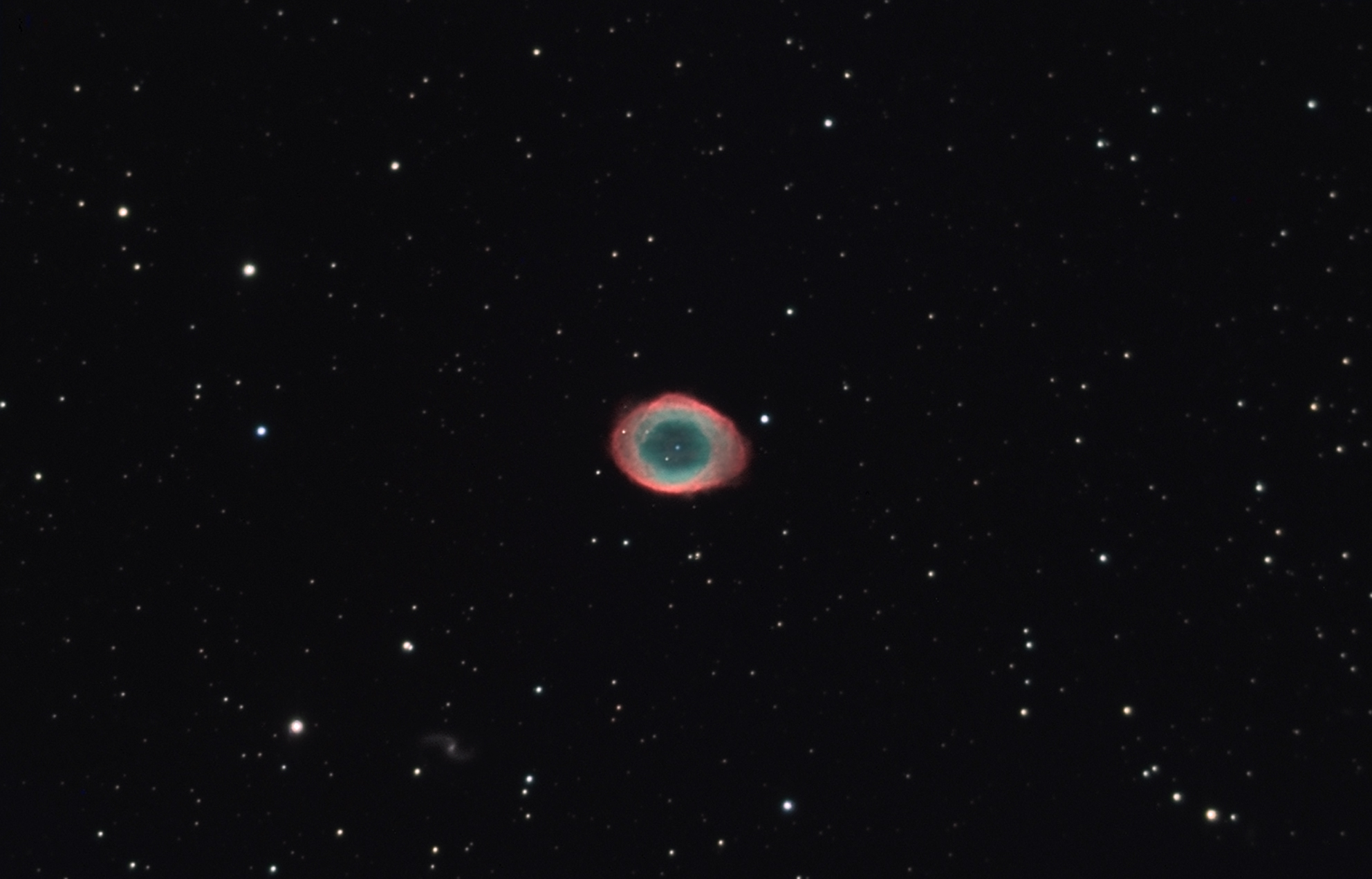

M57 (and IC1296): Stars with mass similar to that of our Sun throw off their outer gasses after fusion has stopped in their core. One of the most famous, and easily found, of these "planetary nebulae" is the Ring Nebula, M57. The appearance as a ring is really an illusion of projection - it is believed that the nebula is actually shaped like a hour-glass (we are seeing it from the end). The bluish star at the center of the nebula is the old core of the star, now evolving into a white dwarf. Nebulae of this type are called "planetary nebulae," because in older smaller scopes, they looked like small, blurry planets. It is about 2000 light years from Earth and is roughly one light year wide; it is visually in the constellation Lyra. IC1296, a magnitude 15 spiral galaxy, can be seen to the lower left of the nebula.
Copyright 2003 Mark de Regt